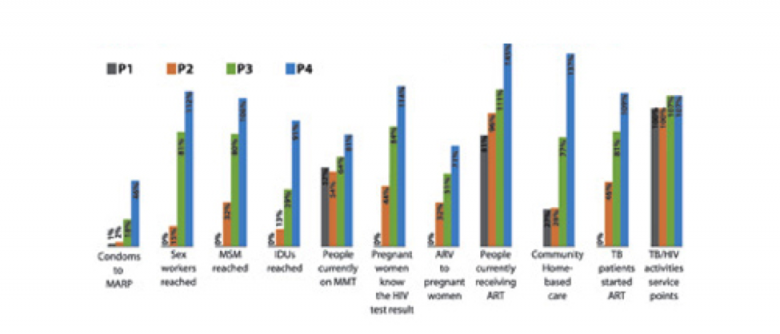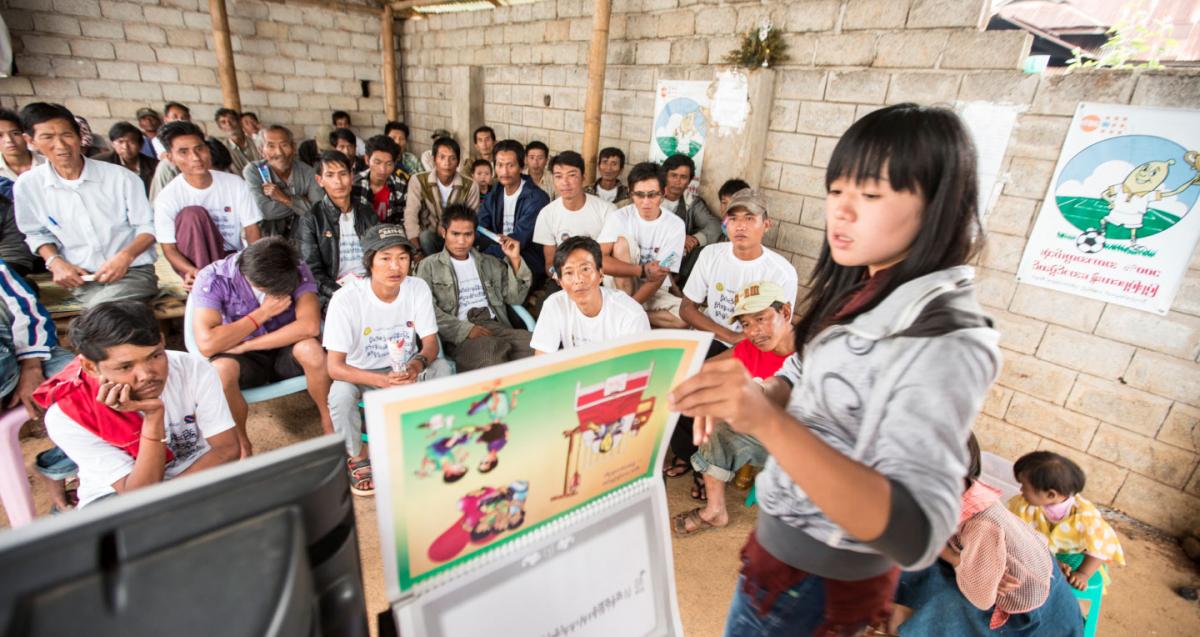
The cumulative results in each period (P1-P4) are shown as a percentage of the annual target. Sex Workers, MSM and IDUs reached are funded by the Global Fund only, while the others are funded by "GFATM and other donors"
The HIV grant has shown significant progress in implementation with eight out of ten reportable Indicators achieving more than 90 per cent of the annual target at the end of Year 1. HIV treatment scale- up and the accelerated enrolment of patients by SRs have resulted in an impressive increase the number of people on ART (12, 939) reaching 145 per cent of the planned target at the end of Year1.
The availability of home-based care increased and at the end of Year 1, 2,881 people (137% of target) were receiving community home-based care with different types of support including network activities for people living with HIV.
Similarly, the PMTCT programme has seen a significant increase in coverage. The number of women undergoing HIV testing and receiving ARV prophylaxis gained significant momentum due to the successful completion of trainings in 20 new townships, while in existing townships momentum was sustained through refresher trainings, along with continued advocacy and community mobilization.
In total, 68,100 women underwent HIV testing and knew their results (114 % of target), while 599 women received ARV (71%). this shortfall was due to the non-enrolment of pregnant women who tested HIV-positive but were lost to follow- up, and to underreporting.
Due to the continuing and accelerated efforts of SRs, 2,190 sex workers (112% of target), 1,059 (106%) MSM and 1,368 (91%) IDUs were reached with HIV prevention activities including peer education trainings, peer group discussion and community outreach activities. Most-at-risk-populations received 947,260 (46%) condoms free of charge during this period. Progress was also made towards increasing the number of people on methadone maintenance therapy (MMT) with 1,637 (81%) clients on MMT at the end of 2012.
The shortfall was attributed to deteriorating security situation in targeted areas, migration of clients and delays in opening new drug treatment centres.


